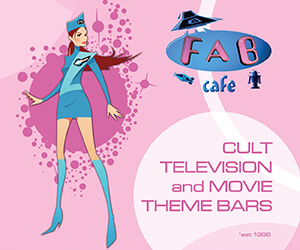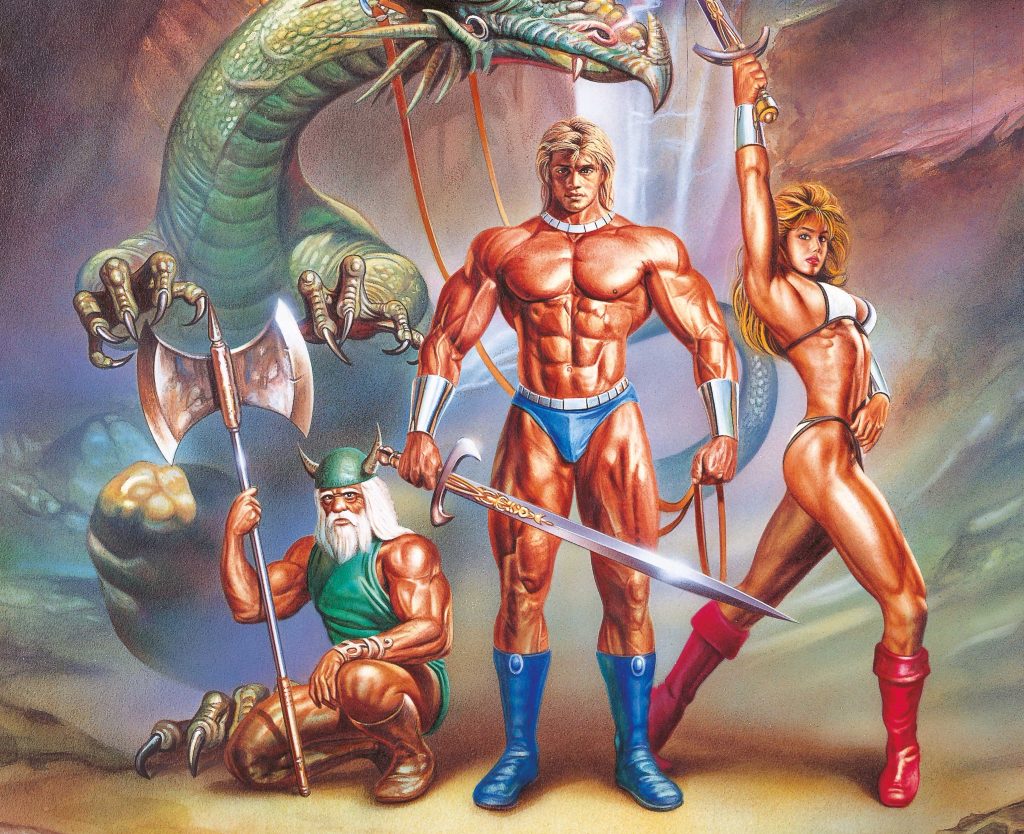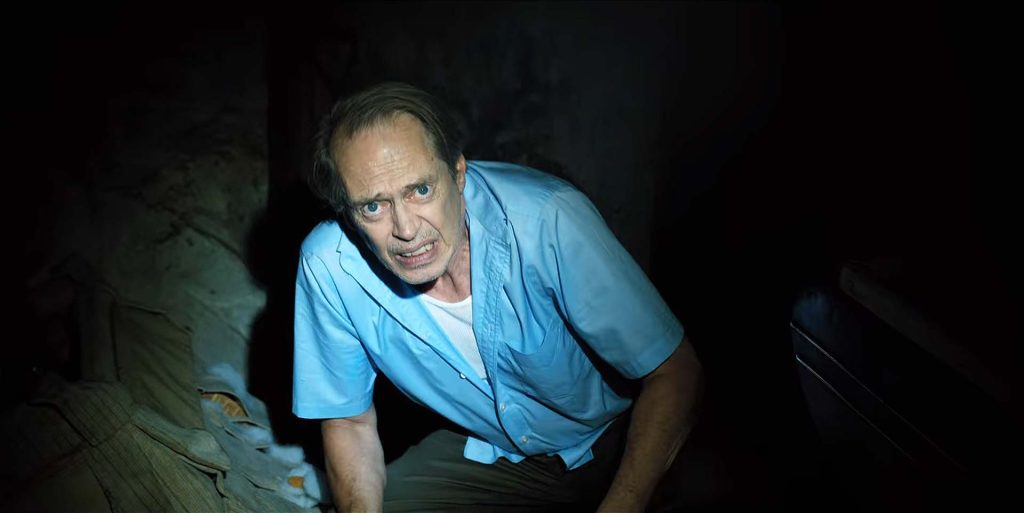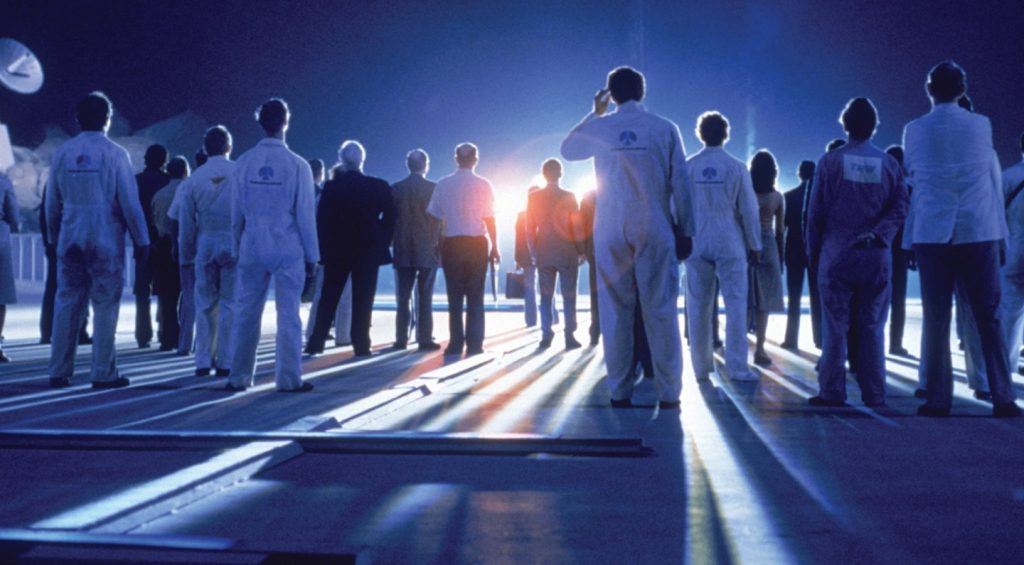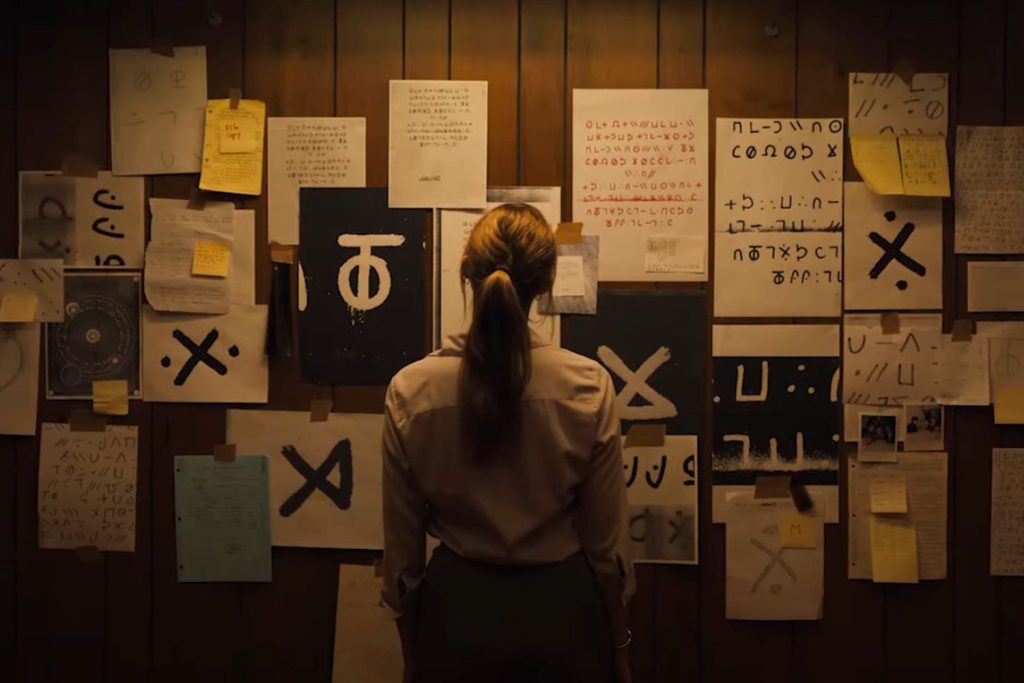
It’s a shame the TARDIS can’t translate everything. Nightmare in Silver (its title inspired by the short stories of Fredric Brown, a brilliantly surreal author of under-rated fantastical fiction) would very likely have made a brilliantly off-the-wall novel, or even perhaps a wonderfully colourful comic strip. But somewhere between the page and the screen, reverse-alchemy has struck. And struck bad.
Not that Nightmare in Silver is an absolute disaster. It’s mostly very enjoyable fare, particularly on a second viewing once the head-scratching that greeted the first is out of the way. But there’s very definitely a sense of it being rather less than the sum of its parts, and when so many of those parts don’t seem entirely satisfactory to begin with, that’s quite a problem.
It’s difficult to know where to lay the blame. The director, Stephen Woolfenden, might seem an unfamiliar name, but he actually has a huge amount of experience working second unit on such prestigious and ambitious projects as the original television State of Play and the Harry Potter movie series. Woolfenden even has previous form with Neil Gaiman; he was the second unit director on the 1996 version of Neverwhere. But the look and the feel and the flow of Nightmare in Silver just don’t add up; in isolation, an underperforming of any one of these elements is forgivable just as long as everything else is working; not so much here. The lighting is similar to that of Russell T Davies’ fourth series (all luminescent primary and secondary colours), which gives the production a horribly backwards-looking appearance, a problem that is extended into the sets and even elements of the script, which are reminiscent of nothing so much as The Doctor’s Daughter. With that story, the “seven-day war”, World Distributors annuals element actually came as a saving grace in an episode that was otherwise heading into dangerously mawkish territory, but here they don’t feel so much out of place, as part of the generally problematic structure of the piece. When the most incongruous component of a poorly-received story ends up being just another ingredient of your overall design, you know you’re in trouble.
And Nightmare in Silver looks cheap. In spite of how much money has very evidently been spent on getting it onto the screen. For once the production design lets a Steven Moffat era story down, and that really doesn’t help. There are scenes in this story that almost look as if there’s no production design at all, and even though there are reasons why that might have been deliberate, it certainly doesn’t help in an episode that’s struggling everywhere else too.
The problems are legion – and many of the things that don’t work almost certainly “read” significantly differently in the original script. The idea of the Cybermen with the ability to run, upgrading at will, and repeating ideas that had worked in earlier stories, is probably something that nobody would have expected to be anything other than terrifying, and yet the results couldn’t be further removed. The one scene in which we see a Cyberman “running” (actually, it’s simply walking really really fast) is perhaps the most startlingly-realised effect I think I’ve ever seen in modern Doctor Who. It’s awful, like the Raston Warrior Robot crossed with Benny Hill. The hand dropping off to attack isn’t so far removed from what was the spookiest sequence in Series Five, the head-hunt in The Pandorica Opens, while here it comes over as flat and unnecessary; the 180° head-spin is evocative of the Dalek’s body-movement in Rob Shearman’s ninth Doctor story, but in this instance it looks almost ridiculous – in fact, this is perhaps the one Cyber-upgrade that nearly works. Adults will find it silly (rather like the notion of the Cybermen being able to make instant, species-wide upgrades from one moment to the next), but children will be terrified.
I haven’t even mentioned the kids, Clara’s charges. Do I need to? Fortunately they’re sidelined relatively early on and stay that way throughout much of the episode, with the possibility that they might be converted (in a most un-classic Cyberman fashion, indeed more like something out of Star Trek) at least bringing cheer to those who will have baulked at the actors’ performances. And they’re far from the biggest problem.
Unfortunately, as much as it pains me to say it given how much I’ve previously enjoyed such stories as Coraline, Stardust and Neverwhere, the biggest problem is undoubtedly Neil Gaiman’s script. If the previous five weeks of Doctor Who have paid homage to the first five screen Doctors, then – and in spite of several noticeable thematic similarities with such stories as Vengeance on Varos, Revelation of the Daleks, Attack of the Cybermen and the unproduced The Nightmare Fair – the element that Gaiman seems to have evoked here is apparently the messiness and frustration most evident during Colin Baker’s troubled spell as the Time Lord. If the sixth Doctor’s tenure was defined by inconsistency and a lack of subtlety, then Nightmare in Silver is defined by two things: the way the individual elements fail to gel (again, this is something that could easily have been made to work in a graphic novel; much harder on television, especially with the otherwise very capable Tamzin Outhwaite utterly mis-cast in a central role, one that ought to have been the cement gluing the disparities together – it’s a part and a performance that is shown up by Jenna-Louise Coleman, who actually excels with a more hard-headed Clara this week ); and the absolute horror of seeing what goes on in the Doctor’s head.
It’s one of those places that you just don’t go, that the visual realisation of which could never have matched what was in the author’s head, and it’s possibly – despite the tile of the subsequent episode, and the secrets that promises to reveal – something that ought to have been Doctor Who’s biggest taboo. I guess the idea of busting that taboo here in the anniversary year, and particularly with the involvement of the writer who bust the TARDIS wide open in The Doctor’s Wife, was just too much to resist. The greatest shame is that, in spite of Matt Smith’s apparent reservations regarding the amount of dialogue he was required to perform, the conceit could so easily have been carried by his external performance of the sequence.
The conclusion of the episode is also spoiled by a compounding of easy resolutions, in much the same way as Cold War was, which is something else almost guaranteed to leave a bad taste in the mouth. After everything that has gone before, it’s galling that the story should finish with its obstacles overcome after so little effort. The moment when Clara is about to come under attack, and the reason she doesn’t, is a massive cop-out on an unforgivable scale.
Having said all that, any project that combines the talents of Neil Gaiman, Steven Moffat and Matt Smith is never going to be entirely without worth. As mentioned, repeated viewings prove Nightmare in Silver to be actually a rather entertaining experience, in somewhat of a WTF? kind of a way. The dialogue and the characterisation are all tremendously agreeable, providing you don’t think about what you’re watching too deeply; even the ideas are valid, if you’re prepared to suspend your expectations for the programme to enough of an extent. And it’s entirely possible that Nightmare in Silver could well go on to become one of those episodes that it’s possible to enjoy in the same manner as The Rocky Horror Show; you don’t know what the hell it is, but it’s engaging enough that you don’t care.
For this reviewer, though, it’s a sadly bungled opportunity. It should and could have been something really special, and instead, it’s nothing more than a dissatisfactory muddle, and an overwhelmingly disappointing follow-up to the genius that was The Doctor’s Wife. “Nightmare” in Silver indeed.



